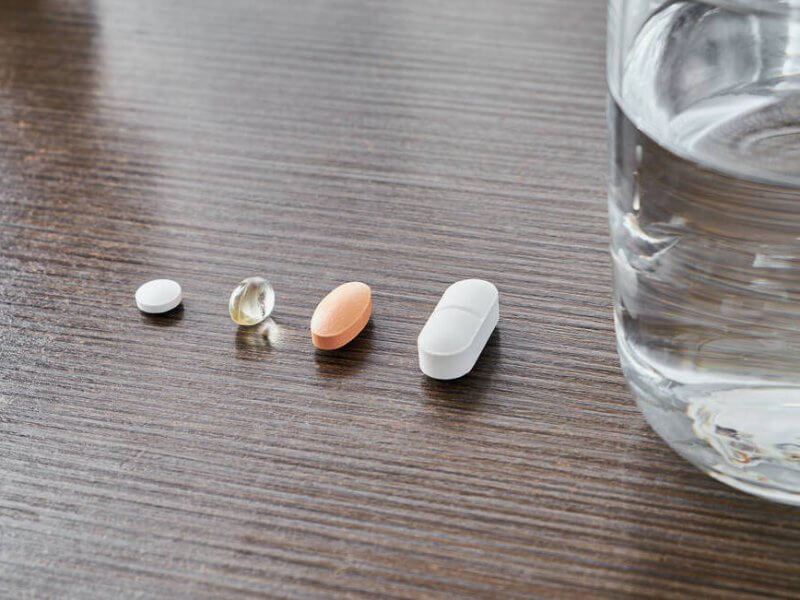241 total views
Introduction: Why Students Use Modafinil
In today’s academic landscape, students face more challenges than ever before. The pressure to perform well, manage heavy workloads, and stay competitive in exams often pushes individuals to seek tools that can improve their focus and efficiency. Among the growing number of “smart drugs” and nootropics, modafinil has become one of the most talked-about study aids.
The Modern Student Struggle
Unlike past generations, today’s learners are bombarded with distractions: constant notifications, social media, part-time jobs, and even online classes that require extended screen time. At the same time, competition is fierce. Medical students may be expected to memorize thousands of terms, while law students face endless reading lists. Even undergraduates often juggle multiple courses, extracurricular activities, and internships.
Under such conditions, mental fatigue becomes one of the biggest enemies of academic success. Many students find themselves hitting a wall when studying late at night or preparing for final exams. This is precisely where modafinil enters the conversation.
Why Modafinil Stands Out
Modafinil isn’t just another cup of coffee or an energy drink. Unlike caffeine, which gives a temporary jolt, modafinil is designed to sustain wakefulness and mental clarity for extended periods. Students often describe it as a “clean energy boost” a state of alertness without the shakiness or anxiety that comes with too much coffee.
Another major factor is its reputation for being less addictive than traditional stimulants like Adderall or Ritalin. While those medications are primarily intended for ADHD, modafinil is approved for sleep-related disorders and is often considered a safer alternative for enhancing productivity.
Common Academic Scenarios
- All-Nighters Before Exams – Students who procrastinated or simply have too much material to cover often rely on modafinil to stay awake through long nights of revision.
- Research & Thesis Writing – Graduate students working on complex projects may use modafinil to sustain long periods of focus, helping them meet deadlines.
- Competitive Exams – Medical board exams, law bar exams, and engineering licensure tests demand intense memorization, making modafinil attractive for boosting efficiency.
- Balancing Work & Study – Part-time students or those holding jobs while studying may use modafinil to stay sharp after exhausting work hours.
The Psychological Factor
Interestingly, the appeal of modafinil isn’t only chemical. For many students, just knowing they have taken a focus-enhancing substance creates a powerful placebo effect. They approach their study sessions with confidence, believing they can push through fatigue. Confidence itself can improve academic performance, making modafinil’s impact both physical and psychological.
Risks of Over-Reliance
Despite its benefits, modafinil isn’t a magic pill. Some students mistakenly believe it will replace healthy habits like proper sleep, exercise, or time management. In reality, modafinil works best when combined with strong study strategies. Over-reliance can lead to burnout, where students push themselves too hard without allowing the brain time to recover.
Another risk lies in peer influence. When one student successfully uses modafinil, others in the same class may feel pressured to do the same, creating an environment where “performance-enhancing drugs” become normalized. Universities and health professionals continue to debate the ethics of using modafinil for non-medical purposes.
A Balanced Perspective
Ultimately, the reason why students use modafinil comes down to the desire for control. In a world where every grade counts and competition is relentless, students look for anything that gives them an edge. Modafinil promises increased wakefulness, sharper concentration, and reduced fatigue all critical during crunch time.
However, responsible use is key. Just like a calculator doesn’t replace the need to understand math, modafinil doesn’t replace the need for discipline, organization, and proper rest. Instead, it can serve as a tool a temporary booster that helps students perform at their best when used wisely.
What is Modafinil? A Quick Overview
Modafinil is not your typical stimulant. First developed in France in the 1970s, it was originally used for narcolepsy a chronic sleep disorder that makes people excessively drowsy during the day. By the late 1990s, it had gained approval in multiple countries for sleep-related conditions such as shift work sleep disorder and obstructive sleep apnea related fatigue.
But what makes modafinil fascinating is its off-label use. Students, entrepreneurs, military personnel, and even astronauts have turned to modafinil as a cognitive enhancer. Unlike illegal stimulants or risky “study drugs,” modafinil has established itself as a legitimate medical treatment with research backing its efficacy.
Key Characteristics of Modafinil
- Non-amphetamine stimulant – It doesn’t overstimulate the nervous system.
- Long half-life – Effects last 10-12 hours, making it perfect for a full day of studying.
- Low abuse potential – Compared to Adderall, dependence risk is far lower.
- FDA-approved – For narcolepsy and related conditions, giving it medical legitimacy.
How It Differs from Other Stimulants
Caffeine is everywhere, from coffee to energy drinks. Amphetamines like Adderall are prescribed for ADHD. Both are widely used by students. So why choose modafinil?
- Caffeine acts fast but wears off quickly, often followed by a crash.
- Amphetamines provide a strong focus boost but carry addiction risks.
- Modafinil provides smooth, sustained energy with minimal jitteriness.
Popularity Among Students
Surveys show that a growing number of university students, particularly in competitive programs like medicine, engineering, and law, report using modafinil. For many, it feels like an “academic performance enhancer” that helps them manage long reading sessions, memorization tasks, and exam preparation.
Ethical Debate
Despite its effectiveness, the use of modafinil in academia sparks debates. Is it fair for some students to use cognitive enhancers while others rely solely on natural methods? Some universities warn against it, citing concerns about unfair academic advantage and health risks. Still, demand continues to rise.
Mechanism of Action: How Modafinil Enhances Focus
Unlike caffeine, which simply blocks adenosine receptors to keep you awake, modafinil works through a complex interplay of neurotransmitters. Scientists are still studying its exact mechanism, but current evidence highlights several pathways:
- Dopamine Regulation – Increases extracellular dopamine, improving motivation and reward-driven behavior.
- Norepinephrine Stimulation – Boosts attention and mental energy.
- Histamine Activation – Enhances alertness and prevents drowsiness.
- Orexin System Influence – Regulates wakefulness and stabilizes sleep-wake cycles.
The Cognitive Impact
- Sustained Focus – Students can remain attentive for 8-12 hours without distractions.
- Enhanced Memory Encoding – Modafinil appears to support working memory, making learning more effective.
- Mood Stabilization – Many users report a calmer, more motivated state compared to caffeine-induced anxiety.
The Science Behind “Flow State”
One of the most attractive features for students is modafinil’s ability to help them enter the flow state a condition of deep immersion where studying feels almost effortless. This happens because modafinil balances neurotransmitters, keeping the brain alert but not overstimulated.
Recommended Dosage for Studying
Standard Dosage Guidelines
The usual modafinil dose is 100-200 mg once daily. For studying purposes, most students find 100 mg sufficient, while some prefer 200 mg for all day coverage. Going above 200 mg does not necessarily improve performance but increases side effects.
Factors Affecting Individual Dosage
- Body Weight – Heavier individuals may metabolize modafinil faster.
- Metabolism Speed – Some students process the drug more quickly.
- Sleep Deprivation Level – Taking modafinil after poor sleep may feel more intense.
- Caffeine Intake – Combining with coffee amplifies effects.
Best Timing for Academic Performance
Timing is everything. To maximize effectiveness:
- Take in the morning (7-10 AM) for full day coverage.
- Avoid dosing after 2 PM to prevent insomnia.
- For evening study sessions, a lower 100 mg dose is recommended.
Safe Usage Practices
Hydration and Nutrition Considerations
Modafinil may suppress appetite, so skipping meals can be tempting. To avoid fatigue:
- Eat balanced meals high in protein and healthy fats.
- Drink at least 2-3 liters of water daily to prevent dehydration headaches.
Sleep Management and Modafinil
One of the biggest mistakes students make is using modafinil as a substitute for sleep. This is unsustainable and counterproductive. The brain still needs deep rest to consolidate memories. Maintaining 7-8 hours of sleep is essential.
Avoiding Overuse and Dependency
- Limit modafinil use to exam periods or particularly demanding days.
- Avoid daily use to reduce risk of tolerance buildup.
- Always cycle off after exams or projects.
Benefits of Modafinil for Students
Increased Focus and Concentration
Students often report the ability to sit for 6-8 hours straight with minimal distraction. Tasks that normally feel boring become easier to engage with.
Improved Memory Retention
Preliminary studies show that modafinil enhances working memory and learning capacity, which are crucial during exam preparation.
Reduced Fatigue During Long Study Hours
Unlike caffeine crashes, modafinil offers steady, sustained energy. Students can push through long nights without feeling drained the next day.
Potential Risks and Side Effects
Short-Term Side Effects
- Headache
- Dry mouth
- Increased heart rate
- Nervousness
- Insomnia
Long-Term Considerations
Long-term safety studies are limited. Concerns include:
- Potential tolerance buildup
- Sleep pattern disruption
- Over-reliance leading to psychological dependence
Comparing Modafinil With Other Study Aids
Caffeine
✅ Cheap, widely available
❌ Short duration, jittery side effects
Adderall
✅ Strong stimulant, clinically proven for ADHD
❌ High abuse potential, side effects
Natural Alternatives
- Rhodiola Rosea – Stress resistance
- L-Theanine + Caffeine – Smooth focus
- Omega-3 fatty acids – Brain health
Legal Status and Accessibility
- Prescription only in the US, UK, EU, Canada, Australia.
- Some countries allow personal import with restrictions.
- Students should check university policies before use.
Expert Tips for Safe and Effective Use
- Start low at 100 mg.
- Use only on important study days.
- Don’t mix with alcohol or heavy stimulants.
- Always prioritize sleep, nutrition, and hydration.
FAQ
1. What is the safest dose of modafinil for studying?
100–200 mg once daily, depending on individual tolerance.
2. Can I take modafinil every day during exams?
It’s safer to use only on critical days to avoid tolerance.
3. Does modafinil improve IQ?
No, but it improves focus, alertness, and study efficiency.
4. Is modafinil addictive?
Low addiction risk, but psychological dependence can occur.
5. Can I combine modafinil with coffee?
Yes, but keep caffeine moderate to avoid jitters.
6. Is modafinil legal for students?
It’s prescription only in most countries. Always check local regulations.
Conclusion
Modafinil can be a powerful tool for studying, but only when used responsibly. It improves focus, reduces fatigue, and helps students stay alert during demanding academic periods. However, it should never replace sleep, nutrition, or time management. Instead, it works best as a supplement to healthy study habits.
For students considering modafinil, the golden rule is moderation. Start small, avoid daily use, and always balance productivity with well-being.
‼️ Disclaimer: The information provided in this article about modafinil is intended for informational purposes only and is not a substitute for professional medical consultation or recommendations. The author of the article are not responsible for any errors, omissions, or actions based on the information provided.
References:
- U.S. Food and Drug Administration. PROVIGIL. U.S. Department of Health and Human Services. https://www.accessdata.fda.gov/drugsatfda_docs/label/2015/020717s037s038lbl.pdf . 2015
- Ballon JS, Feifel D. A systematic review of modafinil: potential clinical uses and mechanisms of action. J Clin Psychiatry. 2006
- Willavize, S. A., Nichols, A. I., & Lee, J. Population pharmacokinetic modeling of armodafinil and its major metabolites. https://doi.org/10.1002/jcph.800 . 2016
- Fuxe K, et al. Modafinil enhances the increase of extracellular serotonin levels induced by the antidepressant drugs fluoxetine and imipramine: a dual probe microdialysis study in awake rat. Synapse. 2005
- Mechanisms of modafinil: A review of current research. nih.gov. 2007
- PROVIGIL (modafinil) Tablets. FDA.GOV. 2010
- Oliva Ramirez A, Keenan A, Kalau O, Worthington E, Cohen L, Singh S. Prevalence and burden of multiple sclerosis-related fatigue: a systematic literature review. https://doi.org/10.1186/s12883-021-02396-1 . 2021.
- Ciancio A, Moretti MC, Natale A, Rodolico A, Signorelli MS, Petralia A. Personality Traits and Fatigue in Multiple Sclerosis: A Narrative Review. Journal of Clinical Medicine. https://doi.org/10.3390/jcm12134518 . 2023
- Mereu, M., Bonci, A., Newman, A. H., & Tanda, G. The neurobiology of modafinil as an enhancer of cognitive performance and a potential treatment for substance use disorders. https://doi.org/10.1007/s00213-013-3232-4 . 2013
- Natsch, A. What makes us smell: The biochemistry of body odour and the design of new deodorant ingredients. CHIMIA International Journal for Chemistry. https://doi.org/10.2533/chimia.2015.414 . 2015
- Hamada, K., Haruyama, S., Yamaguchi, T., Yamamoto, K., Hiromasa, K., Yoshioka, M., Nishio, D., & Nakamura, M. What determines human body odour? Experimental Dermatology. https://doi.org/10.1111/exd.12380 . 2014


